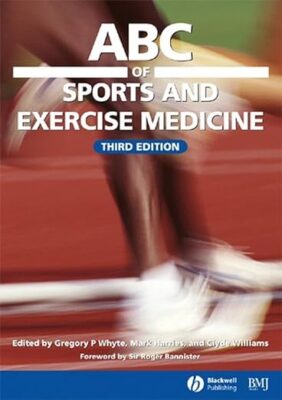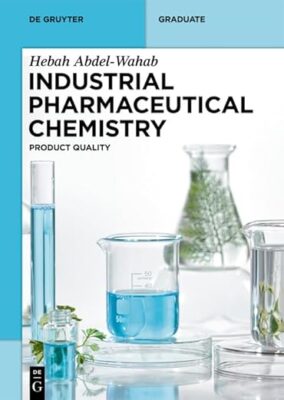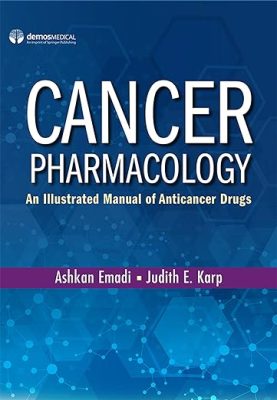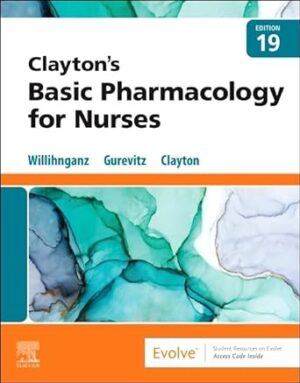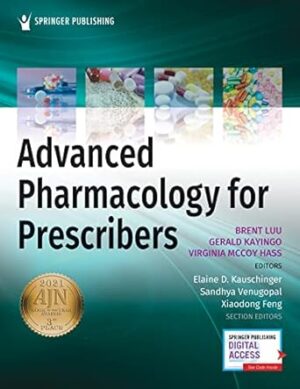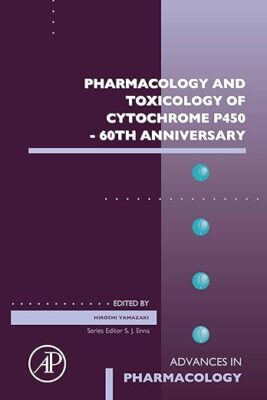Tag: Pharmacology
ABC of Sports and Exercise Medicine
Herbal Radiomodulators: Applications in Medicine, Homeland Defence and Space
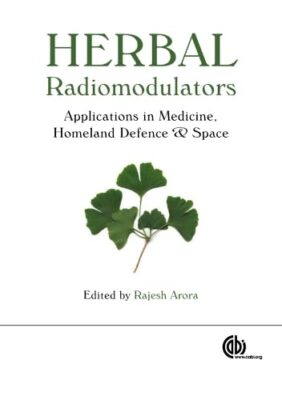
Despite years of research world-over, non-toxic and effective radiomodulators remain elusive. In recent years, there has been a shift towards the use of herbals, which are also apparently being viewed as sources of promising radiomodulatory drugs. This book discusses the potential of radiation countermeasure agents and radiosensitizers of herbal origin, their multifaceted mode of action, specifically the use of the former in a nuclear theatre of operations, rescue operations and deep space missions in addition to their application during radiotherapy.
The Top 100 Drugs: Clinical Pharmacology and Practical Prescribing 1st Edition
Prescribing for the first time is a nerve-wracking experience. Of all the tasks performed by new doctors, it is probably the one with greatest direct impact on the wellbeing of patients. Safe and effective practice rests on a good understanding of both clinical pharmacology and practical prescribing. Acquiring this is not easy, particularly when faced with reams of information about hundreds of unfamiliar drugs, often presented in a way that appears detached from clinical reality.
This book is your starting point. It is a direct response to requests from students for a compendium of the 100 most important drugs in the NHS. Key information about the clinical pharmacology and practical prescribing of each drug is presented side-by-side, allowing you to direct your attention as appropriate for your stage of training. Drugs can be accessed alphabetically when you need quick information on the wards and by organ system or clinical indication when you are at your desk.
Research led by Professor Emma Baker has identified the top 100 drugs by their importance and prescribing frequency. She has shown that the list changes little over time, making it a stable resource upon which to base learning.
“A great practical resource for those new to prescribing the text is aimed at those new to independent prescribing, and for that group I would consider. The Top 100 Drugs to be an excellent publication.” Reviewed by Emma Watts, GP in Surrey on behalf of (journal) Pulse April 2015
“This handy, pocket-sized book is a great practical resource for those new to prescribing.” Reviewed by Pulse, Apr 2015
- The top 100 drugs and the five most important intravenous fluids are presented using a clear, consistent layout across double-page spreads.
- Drugs are arranged alphabetically and also listed by organ system and clinical indication, providing multiple pathways into the information.
- Clinical pharmacology is discussed under the headings: common indications; mechanisms of action; important adverse effects; warnings; and important interactions.
- Practical prescribing is discussed under the headings: prescription; administration; communication; monitoring; and cost.
- A clinical tip is presented for every drug.
- Single-best-answer questions are provided for self-assessment and to show how information from several drugs may be integrated.
- Drugs are arranged alphabetically and also listed by organ system and clinical indication, providing multiple pathways into the information.
Industrial Pharmaceutical Chemistry: Product Quality (De Gruyter Textbook)
This book discusses the effects of prolonged hypoventilation, or a pulmonary condition on hypoxia, and hypercapnia, its effect on the formation of some joint diseases, and the types of natural medicine used in the treatment of each joint disease.
You will also find methods used to calculate thermodynamic parameters. You can also learn optimized structures for these chemical compounds. The book includes a listing of the thermodynamic table for literature values for standard enthalpy of formation, and C-H and O-H Bond dissociation energizes energies for some chemical compounds; simple multi-fluorinated organic alcohols.
Cancer Pharmacology: An Illustrated Manual of Anticancer Drugs (Paperback) – Highly Rated Pharmacology Book 1st Edition
Cancer Pharmacology: An Illustrated Manual of Anticancer Drugs provides a one-stop guide to the essential basic and clinical science of all the effective, life-prolonging drug therapies in oncology. From traditional cytotoxic agents to targeted genomic, epigenomic, hormonal, and immunotherapeutic agents, this pharmacology book covers the staggering advances in cancer pharmacology that are propelling new standards of care for common and uncommon malignancies.
Beautifully illustrated throughout, each chapter in this cancer pharmacology guide contains visually engaging figures detailing the tumor microenvironment, chemical structures of agents, pharmacodynamics, pharmacokinetics, pharmacogenomic, and molecular properties of the various agents, and their mechanisms of action. As the first illustrated book of its kind, this highly visual text uses a uniform approach to each cancer drug class and agent presented in the book, and covers alkylating agents, antimetabolites, antimitotics, epigenetic modulators, hormonal agents, targeted therapies, monoclonal antibodies, immunotherapeutic agents, and much more.
Flow diagrams, clinical tables, and bulleted text further explain important information pertaining to each cancer drug class including their indications, mechanisms of action, potential adverse reactions, dosing and dose adjustments, and safety monitoring. Organized in an easy-to-digest format and replete with detailed images, clinical pearls, and end of chapter Q&As, this evidence-based reference presents all major classes, agents, targets, and approaches to oncology pharmacotherapy.
Key Features:
- Includes visual depictions of chemical structures, pharmacokinetics, pharmacodynamics, and pharmacogenomics associated with each class of agents
- Describes how chemotherapy, targeted therapy, immunotherapy, hormonal therapy, work and why they are expected to work adjuvantly, neoadjuvantly, and in combination with other modalities
- Over 135 highly stylized images and numerous comprehensive tables
- Covers challenges related to drug development, drug approval and regulatory issues in relation to anticancer treatments
- All chapters conclude with clinical pearls and detailed clinical Q&As with descriptive rationales
- Purchase includes access to the ebook for use on most mobile devices or computers
Clayton’s Basic Pharmacology for Nurses 19th Edition
Learn safe, effective nursing care for patients receiving drug therapy! Basic Pharmacology for Nurses, 19th Edition helps you understand the principles of pharmacology and apply them to nursing practice. Known for its practical application of the nursing process to drugs and disorders, this book explains how to make informed decisions about drug therapy, educate patients, and administer medications. This edition adds new Next Generation NCLEX® (NGN)-style case studies and questions to prepare you for the critical thinking questions on the NGN exam. Concise and easy to use, this text teaches the basics of medication administration and drug actions.
-
- Application of the nursing process includes an overview of general principles of nursing care for each disorder, along with specific nursing considerations for drug treatment.
- Drug monographs are provided for each major drug class, describing actions, uses, and therapeutic outcomes for each class.
- Medication Administration unit covers assessment, techniques, procedures, and documentation for the safe administration of percutaneous, enteral, and parenteral drugs.
- Medication safety is emphasized with Medication Safety Alerts and Clinical Pitfall boxes, as well as Do Not Confuse and High Alert icons.
- Clinical Goldmine boxes highlight tips and best practices for clinical procedures.
- Lifespan Considerations boxes draw attention to the implications of drug therapy for children, pregnant and breastfeeding women, and older adults.
- Drug tables summarize generic and brand names, availability, and dosage ranges for key medications for each disorder.Get Ready for the NCLEX® Examination! section at the end of each chapter covers key points as well as review questions, preparing you for course assessments and the NCLEX Examination.
- Learning resources on the Evolve website include video clips of medication administration, animations of drug actions, drug calculators, patient teaching guides, and Next Generation NCLEX® review questions.
- Study guide corresponds to the textbook and offers review questions and clinical scenarios to reinforce your understanding of nursing pharmacology. Available separately.
- NEW! Next Generation NCLEX® (NGN)-style questions help you develop higher cognitive thinking skills, including clinical judgment, and provide opportunities to practice for the new question formats on the NGN exam.
- NEW! Updated content is included for newly approved and frequently prescribed pharmaceutical drugs, and for their therapeutic uses.
- NEW! Unfolding case studies help you translate pharmacological knowledge into nursing practice and provide preparation for the Next Generation NCLEX exam.
- Study guide corresponds to the textbook and offers review questions and clinical scenarios to reinforce your understanding of nursing pharmacology. Available separately.
Advanced Pharmacology for Prescribers – A Comprehensive and Evidence-Based Pharmacology Reference Book for Advanced Practice Students and Clinicians 1st Edition
Delivers the critical information primary care providers need to be thoroughly informed prescribers.
Advanced Pharmacology for Prescribers —an evidence-based pharmacology text and reference for advanced practice students and clinicians—is a unique resource that guides users in analyzing the foundations of drug therapy and fosters the development of sound clinical judgment in determining the appropriate medication for every patient across the lifespan. Targeting the specific needs of APRN and PA students and clinicians, this pharmacology book is a “bridge” between standard, lengthy texts and quick pocket references that lack information regarding key pharmacotherapy principles.
Featuring an applied therapeutic approach to major disorders and their pharmacologic treatment, the book examines how medications act on the body and visa versa, while teaching the rationale for using specific therapeutic agents or drug classes. Each chapter includes case studies that apply the concepts discussed, relevant diagnostic studies, applicable guidelines, genomics, and important lifespan considerations. Of special interest is a chapter on pharmacogenetics explaining the basic principles underlying our current understanding of genetic variations in response to pharmacotherapy and adverse drug reactions. Easily digestible chapters include objectives and review questions. Ancillary resources include an instructor manual with learning objectives, chapter summaries, and case studies; chapter PowerPoint slides; test bank; and image bank.
Key Features:
- Delivers an applied, evidence-based foundation on the basic science underlying prescribing.
- Targets the specific needs of APRN and PA students and professionals and related healthcare providers.
- Provides clinical decision-making tools and principles to support sound prescribing judgment.
- Focuses on synthesizing drugs to manage commonly occurring disorders.
- Includes strategies for addressing the needs of specific populations throughout the lifespan.
- Includes abundant case studies illuminating key concepts.
- Includes a robust instructor manual with learning objectives, chapter summaries, and case studies; PowerPoint slides; test bank; and image bank.
- Purchase includes access to the eBook for use on most mobile devices or computers.
- Publisher: Springer Publishing
Pharmacology and Toxicology of Cytochrome P450 – 60th Anniversary (ISSN)
Pharmacology and Toxicology of Cytochrome P450 – 60th Anniversary, Volume 95 highlights the extensive contributions by worldwide researchers in the cytochrome P450 (P450) field over the past six decades, and since the first article on P450 was published in 1962. Chapters in this new release include Multiple conformations of cytochromes P450 and the relevance to predicting SAR, Pharmacogenetics of the cytochromes P450 and relevance to drug metabolism, Cytochromes P450 drug metabolism within the brain, Mammalian cytochrome P450 biodiversity: Physiological importance, function, and protein and genomic structures of cytochromes P4502B in multiple species of woodrats with different dietary preferences, and more.
Additional section cover Atypical kinetics of cytochrome P450 enzymes in drug metabolism, Biosynthesis using cytochrome P450 Enzymes: focus on synthesis of drug metabolites, Use of engineered cytochrome P450s for accelerating drug discovery and development, Assessing cytochrome P450 function using genetically engineered mouse models, Use of the biologicals with sustainable reproducibility for phenotyping study of cytochrome P450 enzymes involved in the biotransformation of test compounds and calculating the fraction unbound parameter, for anticipating drug Interactions, and much more.
Research on many forms of P450s has been extended into different fields, from molecules to in vivo situations because pharmacologists and toxicologists appreciate and are attracted to the potential therapeutics. The purpose of this volume is to collect a comprehensive description of major progress to date, to discuss possible future directions, and to invite young researchers to join this important and exciting world of P450.
- Comprehensive coverage of major progress in the last 60 years on the P450 research in pharmacology and toxicology
- Discussion of possible future directions of the research on P450s, especially for improved pharmacotherapy in humans
- Encouragement to young scientists to join this important and exciting basic, translational, and advanced world of P450
Lippincott’s Illustrated Q&A Review of Pharmacology (Lippincott Illustrated Reviews Series) 1st Edition
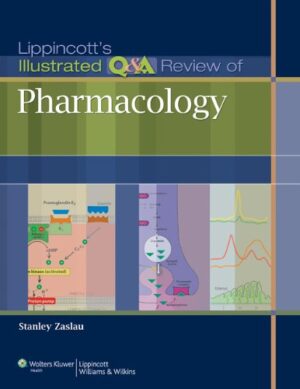
Lippincott’s Illustrated Q&A Review of Pharmacology offers up-to-date, clinically relevant board-style questions—perfect for course review and board prep. 1,000 multiple-choice questions with detailed answer explanations cover frequently tested topics in pharmacology, including questions related to clinical topics and divided by body systems. The book features full-color illustrations and offers flexible study options with online access to the questions and answers on a companion website.
This is the tablet version which does not include access to the supplemental content mentioned in the text.


